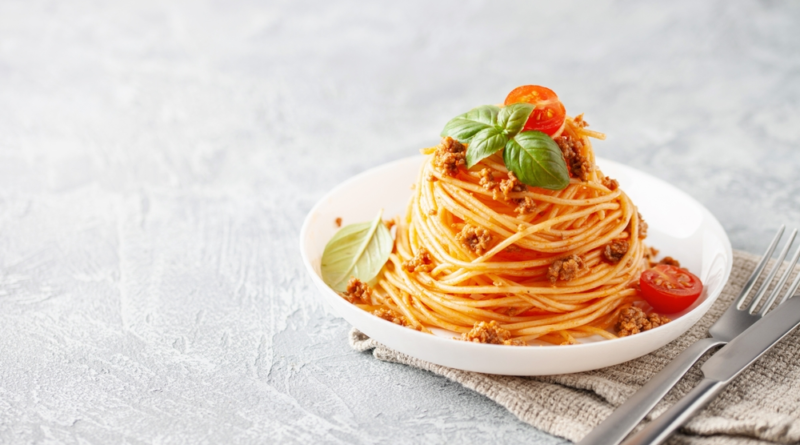Authentic Italian Pasta Recipes
Italian pasta, a cornerstone of Italy’s rich culinary tradition, is celebrated globally for its versatility, flavor, and simplicity. From the bustling streets of Rome to the tranquil countryside of Tuscany, pasta dishes are a cherished part of daily life. In this comprehensive guide, we’ll delve into the heart of Italian pasta recipes, exploring regional specialties, tips for perfect pasta, and authentic recipes that will transport your taste buds straight to Italy.
The Heart of Italian Cuisine: Pasta
Pasta is more than just a dish in Italy; it’s a way of life. With a history that dates back centuries, pasta has evolved from a simple sustenance food to a symbol of Italian culture and heritage. Whether it’s a quick weeknight meal or a festive Sunday dinner, pasta dishes bring families together around the table.
The Art of Pasta Making
Before diving into recipes, it’s essential to understand the art of pasta making. Traditional Italian pasta can be divided into two main categories: fresh and dried.
Fresh Pasta (Pasta Fresca):
- Made with simple ingredients: flour, eggs, and a pinch of salt.
- Typically used in dishes like fettuccine, ravioli, and tagliatelle.
- Best enjoyed immediately or within a few days of preparation.
Dried Pasta (Pasta Secca):
- Made from durum wheat semolina and water.
- Dried slowly to preserve its texture and flavor.
- Ideal for long storage and used in dishes like spaghetti, penne, and rigatoni.
Essential Ingredients for Authentic Italian Pasta
To make truly authentic Italian pasta dishes, quality ingredients are key:
- Flour: Opt for 00 flour for fresh pasta; it’s finely ground and perfect for smooth, silky dough.
- Eggs: Fresh, free-range eggs contribute to the richness of the pasta.
- Olive Oil: Extra virgin olive oil adds depth and flavor to sauces.
- Tomatoes: San Marzano tomatoes are preferred for their sweet, intense flavor.
- Cheese: Parmigiano-Reggiano and Pecorino Romano are staples in many recipes.
- Herbs: Fresh basil, parsley, and oregano enhance the freshness of the dishes.
- Garlic: A fundamental component in many Italian sauces.
Mastering Italian Pasta Sauces
Italian pasta sauces are as varied as the pasta shapes themselves. Here are some classics that every pasta lover should know:
Marinara Sauce: A simple, tomato-based sauce with garlic, onions, and fresh basil. Perfect for spaghetti or as a base for more complex dishes.
Bolognese Sauce (Ragù): A hearty meat sauce from Bologna, made with ground beef, pork, and a mix of vegetables. Ideal for tagliatelle or pappardelle.
Carbonara: A rich, creamy sauce made with eggs, Pecorino Romano cheese, pancetta, and black pepper. Best paired with spaghetti or rigatoni.
Pesto Genovese: A fresh, vibrant sauce from Genoa made with basil, garlic, pine nuts, Parmesan, and olive oil. Traditionally served with trofie or trenette.
Aglio e Olio: A minimalist yet flavorful sauce of garlic, olive oil, and chili flakes. Perfect for a quick weeknight dinner with spaghetti.
Regional Italian Pasta Specialties
Italy’s diverse regions offer a wealth of unique pasta dishes, each reflecting local ingredients and traditions.
Lazio: Spaghetti alla Carbonara One of Rome’s most famous dishes, Spaghetti alla Carbonara is beloved for its simplicity and depth of flavor. The combination of eggs, Pecorino Romano, pancetta, and black pepper creates a creamy, satisfying dish without the need for cream.
Emilia-Romagna: Tagliatelle al Ragù The rich, meaty Bolognese sauce is traditionally served with tagliatelle, a ribbon-like pasta that holds the sauce beautifully. This dish is a staple in Bologna and showcases the region’s love for hearty, comforting food.
Liguria: Trofie al Pesto Liguria’s Pesto Genovese is a fragrant, green sauce that pairs perfectly with trofie, a short, twisted pasta. The fresh basil and pine nuts create a vibrant, aromatic dish that’s quintessentially Ligurian.
Campania: Spaghetti alle Vongole A coastal favorite from Naples, Spaghetti alle Vongole (spaghetti with clams) combines the briny flavor of fresh clams with garlic, olive oil, and parsley. It’s a light, flavorful dish that highlights the region’s seafood bounty.
Sicily: Pasta alla Norma Named after the opera “Norma” by Vincenzo Bellini, this Sicilian classic features fried eggplant, tomato sauce, basil, and ricotta salata. It’s a delicious vegetarian dish that captures the essence of Sicilian cuisine.
Tips for Perfect Pasta
To achieve pasta perfection, follow these essential tips:
- Salt the Water: Add a generous amount of salt to the boiling water before cooking pasta. It should taste like the sea.
- Cook Al Dente: Pasta should be cooked to al dente, meaning it should be firm to the bite. This ensures it retains its texture and absorbs the sauce well.
- Reserve Pasta Water: Save some of the starchy pasta water before draining. It’s excellent for adjusting the consistency of the sauce.
- Toss with Sauce: Always toss the pasta with the sauce in the pan for the last minute of cooking. This allows the pasta to absorb the flavors and ensures even coating.
Authentic Italian Pasta Recipes
Now, let’s explore some authentic Italian pasta recipes that you can recreate at home.
Spaghetti alla Carbonara
Ingredients:
- 400g spaghetti
- 200g pancetta or guanciale, diced
- 4 large eggs
- 100g Pecorino Romano, grated
- Freshly ground black pepper
- Salt
Instructions:
- Cook the spaghetti in salted boiling water until al dente.
- In a large pan, cook the pancetta until crispy.
- Beat the eggs in a bowl and mix in the grated Pecorino Romano.
- Drain the pasta, reserving some pasta water. Add the spaghetti to the pan with pancetta and toss well.
- Remove the pan from heat, pour in the egg and cheese mixture, and toss quickly. Add reserved pasta water as needed to achieve a creamy consistency.
- Season with freshly ground black pepper and serve immediately.
Tagliatelle al Ragù (Bolognese)
Ingredients:
- 400g tagliatelle
- 200g ground beef
- 200g ground pork
- 1 carrot, finely diced
- 1 celery stalk, finely diced
- 1 onion, finely diced
- 2 cloves garlic, minced
- 1 cup tomato puree
- 1 cup beef broth
- 1/2 cup red wine
- 2 tbsp olive oil
- Salt and pepper
- Fresh basil and Parmigiano-Reggiano for serving
Instructions:
- Heat olive oil in a large pot and sauté carrot, celery, and onion until softened.
- Add the minced garlic and cook for another minute.
- Add the ground beef and pork, cooking until browned.
- Pour in the red wine and let it reduce by half.
- Stir in the tomato puree and beef broth. Season with salt and pepper.
- Simmer the sauce for at least 2 hours, stirring occasionally.
- Cook the tagliatelle in salted boiling water until al dente.
- Toss the pasta with the ragù and serve with fresh basil and grated Parmigiano-Reggiano.
Trofie al Pesto
Ingredients:
- 400g trofie pasta
- 2 cups fresh basil leaves
- 1/2 cup extra virgin olive oil
- 1/3 cup pine nuts
- 2 cloves garlic
- 1/2 cup grated Parmigiano-Reggiano
- Salt and pepper
Instructions:
- In a blender or food processor, combine basil, pine nuts, garlic, and a pinch of salt. Pulse until finely chopped.
- Gradually add the olive oil while blending until smooth.
- Stir in the grated Parmigiano-Reggiano and season with salt and pepper.
- Cook the trofie in salted boiling water until al dente.
- Drain the pasta, reserving some pasta water. Toss the pasta with pesto, adding pasta water as needed to reach desired consistency.
- Serve immediately with extra grated Parmigiano-Reggiano.
Conclusion
Italian pasta recipes are a testament to the country’s love for simple, high-quality ingredients and traditional cooking methods. By mastering these authentic dishes, you not only bring a piece of Italy into your kitchen but also celebrate the rich culinary heritage that has made Italian cuisine beloved worldwide. So gather your ingredients, follow these recipes, and enjoy the timeless pleasure of a perfectly prepared pasta dish. Buon appetito!

